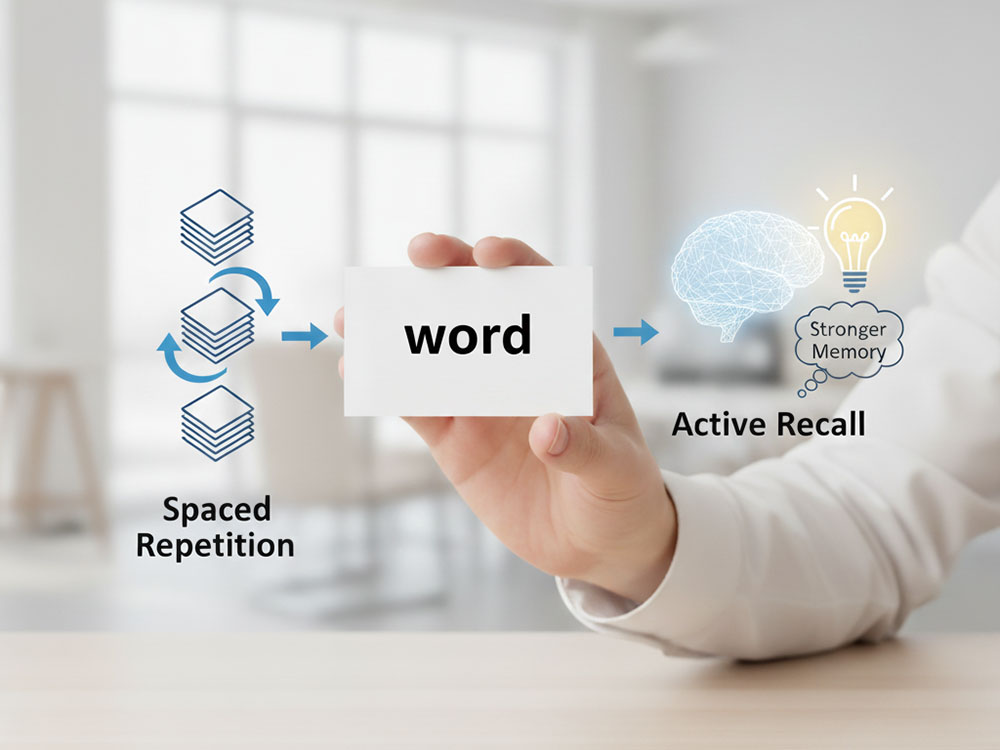The Leitner system is one of the most effective methods for memorization and long-term retention, especially popular among language learners. Developed by German science journalist Sebastian Leitner in the 1970s, it uses spaced repetition to help you learn faster and forget less by focusing your attention on the information you struggle with the most.
In this expanded guide, we’ll explore how the Leitner system works, the science behind it, why it’s so effective, and practical tips for applying it to language learning and beyond.
1. A Brief History of the Leitner System
Before the 1970s, flashcards were already a popular tool for memorization, but Sebastian Leitner introduced a structured, scientific approach to make them more effective.
In his book “So lernt man lernen” (“How to Learn to Learn”), Leitner proposed a multi-box flashcard system that mirrors how human memory naturally works. Instead of reviewing everything equally, the system:
- Repeats difficult items more frequently.
- Spaces out reviews for easier items.
- Optimizes study time by focusing where you need it most.
Over time, this approach became widely adopted, influencing modern learning apps like Anki, Quizlet, Memrise, and LanGeek Daily Words.
2. How the Leitner System Works

The Leitner system is based on three simple principles:
- Use flashcards to test yourself.
- Sort cards into boxes based on how well you know them.
- Review boxes at different intervals to reinforce memory.
Step 1. Prepare Flashcards
Write a prompt on one side and the answer on the other:
- Front: “What is the Spanish word for ‘dog’?”
- Back: “Perro”
Step 2. Organize Boxes
Traditionally, the Leitner system uses five boxes:
| Box | Review Frequency | Meaning |
|---|---|---|
| Box 1 | Daily | New or difficult cards |
| Box 2 | Every 2–3 days | Cards remembered once |
| Box 3 | Weekly | Fairly well-known cards |
| Box 4 | Every 2 weeks | Confidently remembered cards |
| Box 5 | Monthly | Mastered items |
Step 3. Review and Sort
During each session:
- If you answer correctly, move the card up one box.
- If you answer incorrectly, move it back to Box 1, no matter where it was.
This creates a personalized learning cycle where:
- You review difficult items frequently.
- You save time on mastered material.
- You naturally spend more energy where it matters most.
3. The Science Behind the Leitner System
The effectiveness of the Leitner method comes from combining spaced repetition and active recall, two evidence-based learning strategies.
a) Spaced Repetition
Instead of cramming, you review material right before you’re likely to forget it. Cognitive studies show that spaced intervals help strengthen memory pathways and reduce forgetting dramatically.
b) Active Recall
Testing yourself forces the brain to retrieve information, which strengthens long-term retention. Unlike passive reading, active recall:
- Forms stronger memory connections.
- Improves speed and accuracy of retrieval.
- Enhances confidence when using knowledge.
c) The Forgetting Curve
Psychologist Hermann Ebbinghaus discovered that we forget information rapidly without review. The Leitner system fights this by refreshing memory at just the right time, making knowledge stick longer.

4. Using the Leitner System for Language Learning
The Leitner method is extremely popular among language learners because it handles vocabulary acquisition efficiently.
a) Vocabulary Building
Use flashcards for:
b) Pronunciation and Listening
Digital flashcards let you attach audio recordings:
- Hear native pronunciation.
- Repeat aloud to improve speaking skills.
c) Grammar Patterns
Instead of memorizing abstract rules, create flashcards with:
- Example sentences.
- Fill-in-the-blank exercises.
- Conjugation drills.
d) Tools That Automate the Leitner System
Apps like Anki, Quizlet, Memrise, and LanGeek Daily Words automate:
- Card sorting.
- Review scheduling.
- Progress tracking.
This saves time and ensures scientific spacing intervals are applied consistently.
5. Tips to Use the Leitner System Effectively
1. Keep Cards Simple
Each flashcard should focus on one idea:
- ❌ “List all past tense verbs.”
- ✅ “Past tense of go → went.”
2. Include Context
Add example sentences instead of isolated words:
- ❌ “Bank = banco”
- ✅ “I went to the bank → Fui al banco.”
3. Use Images and Audio
Visual and auditory cues activate dual coding, helping you remember better.
4. Stick to a Routine
Consistency is key:
- Spend 10–20 minutes daily.
- Don’t let cards pile up in Box 1.
- Combine short sessions with immersion activities.
5. Mix Topics
Shuffle your cards to prevent pattern memorization and ensure genuine recall.
6. Advantages of the Leitner System
- Efficient Learning: Focuses on what you don’t know.
- Long-Term Retention: Spaced repetition reduces forgetting.
- Customizable: Works for languages, exams, medicine, coding, and more.
- Flexible: Can be used with physical cards or digital apps.
7. Limitations and How to Overcome Them
| Challenge | Solution |
|---|---|
| Requires daily discipline | Use digital apps with reminders and streaks |
| Can get overwhelming | Limit Box 1 to 20–30 cards per day |
| Passive memorization risk | Add images, audio, and examples for context |
| Lacks natural usage | Combine Leitner with speaking and writing practice |
8. Leitner System vs. Traditional Studying
| Aspect | Leitner System | Traditional Cramming |
|---|---|---|
| Review frequency | Based on memory strength | Same for all items |
| Retention | High, through spaced repetition | Low, due to mass forgetting |
| Efficiency | Focuses on weak points | Wastes time on mastered items |
| Engagement | Active recall | Passive rereading |
9. Real-Life Example: Language Learner Success
Imagine Ana, an English learner:
- She starts with 200 vocabulary flashcards.
- On day one, all cards are in Box 1.
- After a week, 50 cards have reached Box 3 and are reviewed weekly.
- By the end of the month, 30 cards are in Box 5—she knows them perfectly.
This approach transforms overwhelming word lists into manageable, personalized learning.
10. Where to Use the Leitner System Online
If you prefer digital tools, several platforms make it easy to apply the Leitner system automatically:
- Anki – Open-source spaced repetition app, highly customizable.
- Quizlet – Offers flashcard sets with built-in review schedules.
- Memrise – Great for vocabulary learning with spaced repetition.
- LanGeek Daily Words – Integrates Leitner-based reviews for efficient vocabulary retention.
- Brainscape – Uses a confidence-based Leitner-inspired approach.
References
- Leitner, S. (1972). So lernt man lernen.
- Cepeda, N. J., et al. (2006). Distributed Practice in Verbal Recall Tasks: A Review and Quantitative Synthesis. Psychological Bulletin, 132(3), 354–380.
- Kang, S. H. K. (2016). Spaced Repetition Promotes Efficient and Effective Learning. Policy Insights from the Behavioral and Brain Sciences, 3(1), 12–19.

